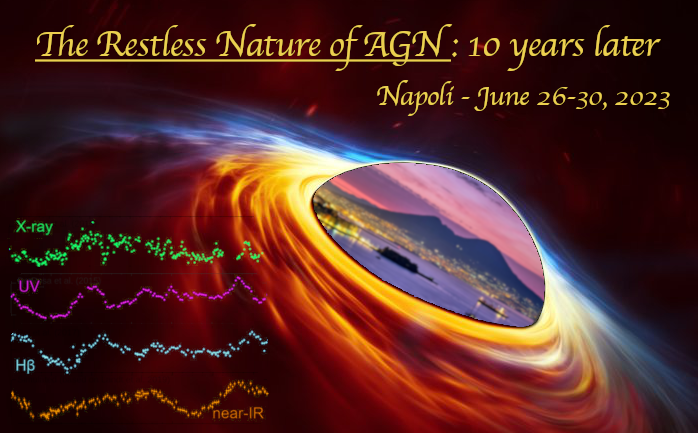Variability characterizes AGN at all wavelengths and is observed both in continuum and line emission. My talk aims at giving an overview of AGN optical/UV variability, focusing on the main results and challenges from the past decades.
Variability of AGN in all wavelengths has been known for decades, with timescales ranging from days to years. However, the physical mechanisms driving such variability are still unclear. X-ray Power Spectral Densities (PSDs) are usually well represented by power laws with slopes α ~ -1 at low frequencies, and α ~ -2 at high frequencies. Similar power-law trends have also been observed in...
All quasars show a common stochastic variability, seen across various observed wavelengths and timescales. The origin of this variability is still uncertain, though variability in the optical is thought to stem from processes in the accretion disk around the SMBH. Time-series variability analysis presents a unique way to probe a quasar's geometry and dynamics in this regime without ultra-fine...
I present initial results from long-term (U)BV(u')g'r' photometry with the Las Cumbres Observatory robotic telescope network of a sample of ~80 AGN with a cadence of typically 1 month. The sample includes multiple representatives from the following AGN sub-categories: NLS1 with strong Fe II emission; Seyferts with Keplerian rotator broad line profiles; Seyferts with strong broad He II...
Quasars optical variability gives us clues to understand the accretion disc around supermassive black holes. We can expect variability properties to correlate with the main physical properties of the accreting black hole, i.e., its mass and accretion rate. It has been established that the relative amplitude of optical variability anti-correlates with the accretion rate and luminosity.The...
I will briefly review basic analysis methods used to describe the typical optical variability of AGN - structure functions and power spectra. I will discuss the applicability, usage, biases, and limitations of these methods and present some of the results for the OGLE AGN 20-year-long sample.
Variability studies of Active Galactic Nuclei (AGNs) have proven to be a powerful diagnostic tool for understanding the physics and properties of these objects. They provide insights into the spatial and temporal distribution of the emitting regions, the structure and dynamics of the accretion disk, and the properties of the central black hole. Here, we present the results of a ten-year...
We use data from the Panoramic Survey Telescope and Rapid Response System 1 Survey (Pan-STARRS1, PS1) to extend the Sloan Digital Sky Survey (SDSS) Stripe 82 quasar light curves. Combining PS1 and SDSS light curves provides a 15 yr baseline for 9248 quasars–five years longer than prior studies that used only SDSS. We fit the light curves with the damped random walk (DRW) model – a statistical...
Intermediate-mass black holes (IMBHs) are key pieces in the puzzle of extragalactic and galactic astronomy, due to their potential to answer questions related the formation and evolution of supermassive black holes and co-evolution with their host galaxies, among others. Because of the difficulties present when detecting and confirming sources as IMBHs, they have proven to be an elusive...
I am going to present the results of the search for small-amplitude (A_g > 0.03 mag), long-period (100 < P[days] < 600) variability in the SDSS Stripe 82 region. This search led to the discovery of five quasars with apparently periodic light curves. In addition, I will discuss the line profile variability (presumably linked to the change in the phase of the optical light curve) of the MgII...

